Loading
The surface
Pedro Pegenaute
Avinguda Meridiana
Avinguda Meridiana. Sant Martí and Sant Andreu

Avinguda Meridiana
Avinguda Meridiana. Sant Martí and Sant Andreu

Avinguda Meridiana
Avinguda Meridiana. Sant Martí and Sant Andreu
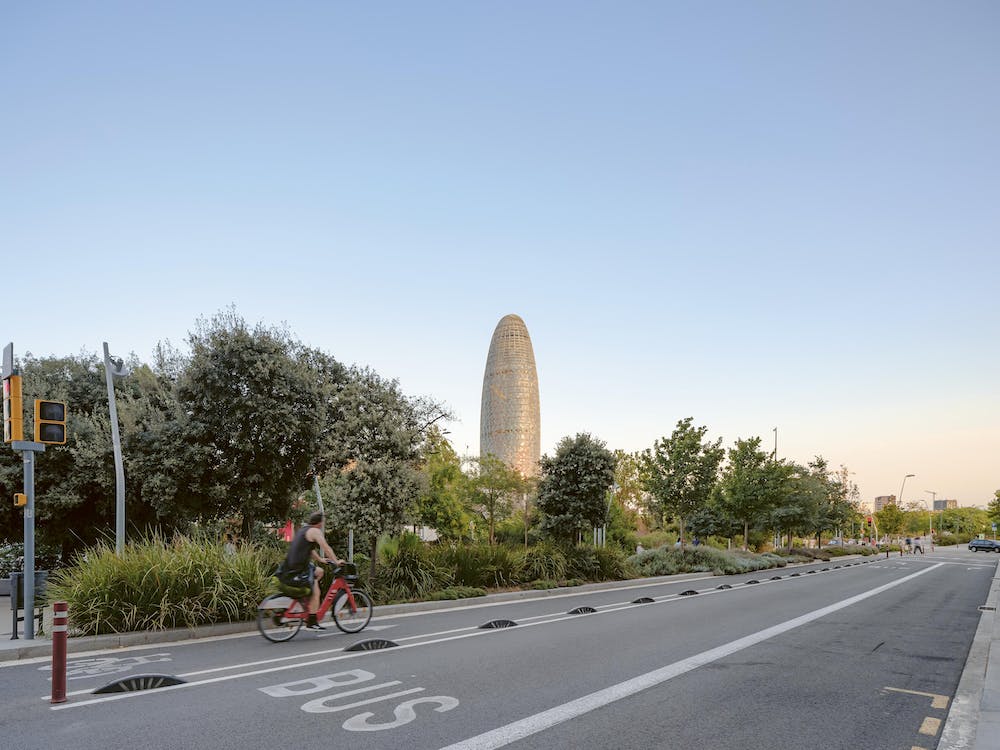
Avinguda Meridiana
Avinguda Meridiana. Sant Martí and Sant Andreu

Poblenou superblock
Poblenou. Sant Martí

Poblenou superblock
Poblenou. Sant Martí

Poblenou superblock
Poblenou. Sant Martí

Olympic port
Moll de Mestral wharf. Sant Martí

La Marina Skatepark
Pg. Zona Franca, 99. Sants-Montjuïc
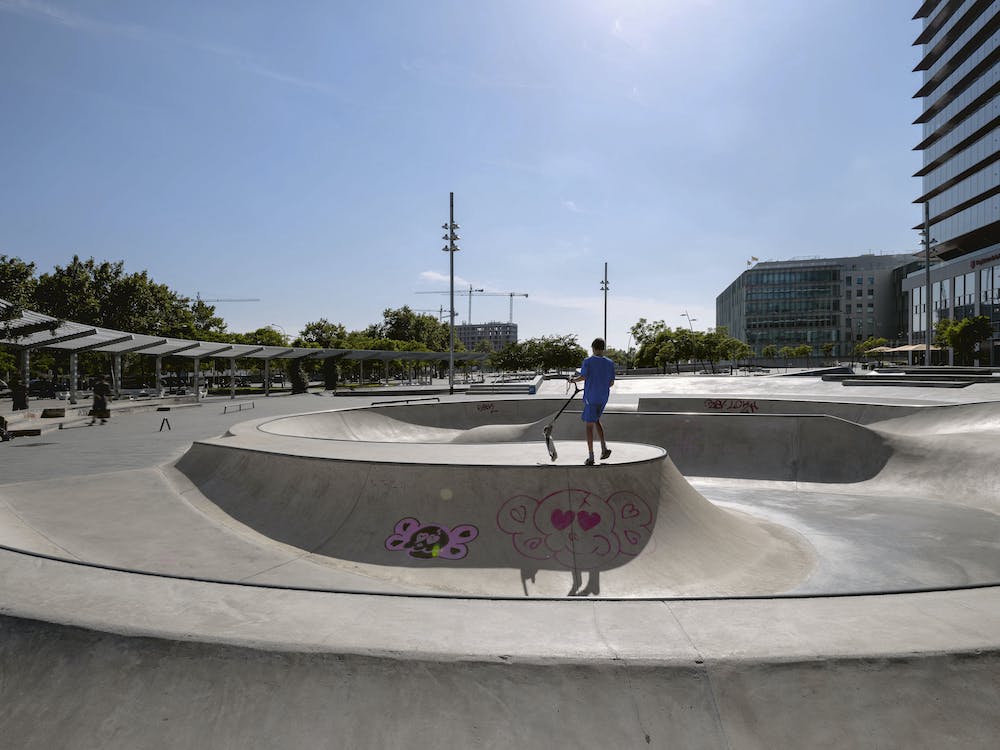
Olympic port
Moll de Mestral wharf. Sant Martí

Diagonal-Besòs University Campus
Av. Eduard Maristany. Sant Martí

Carrer Gran de Sant Andreu
C/Gran de Sant Andreu. Sant Andreu

Sant Antoni superblock
Sant Antoni. L’Eixample

Sant Antoni superblock
Sant Antoni. L’Eixample

Sant Antoni superblock
Sant Antoni. L’Eixample
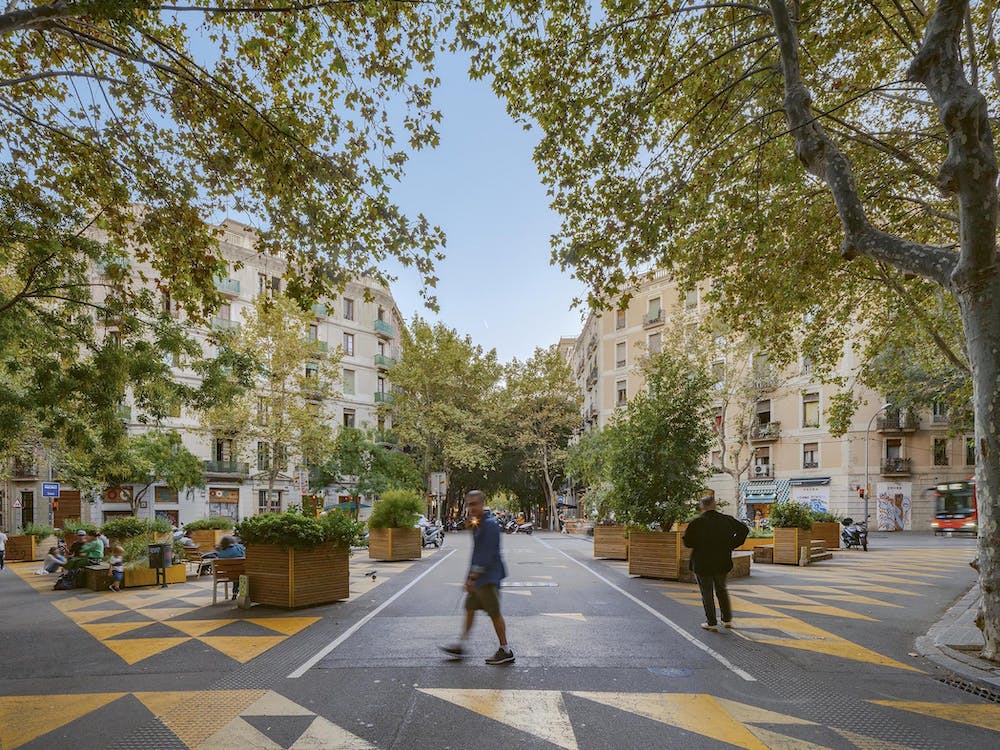
Sant Antoni superblock
Sant Antoni. L’Eixample

Sant Antoni superblock
Sant Antoni. L’Eixample

Diagonal-Besòs University Campus
Av. Eduard Maristany. Sant Martí

Avinguda Meridiana
Avinguda Meridiana. Sant Martí and Sant Andreu

Avinguda Meridiana
Avinguda Meridiana. Sant Martí and Sant Andreu

Diagonal-Besòs University Campus
Av. Eduard Maristany. Sant Martí
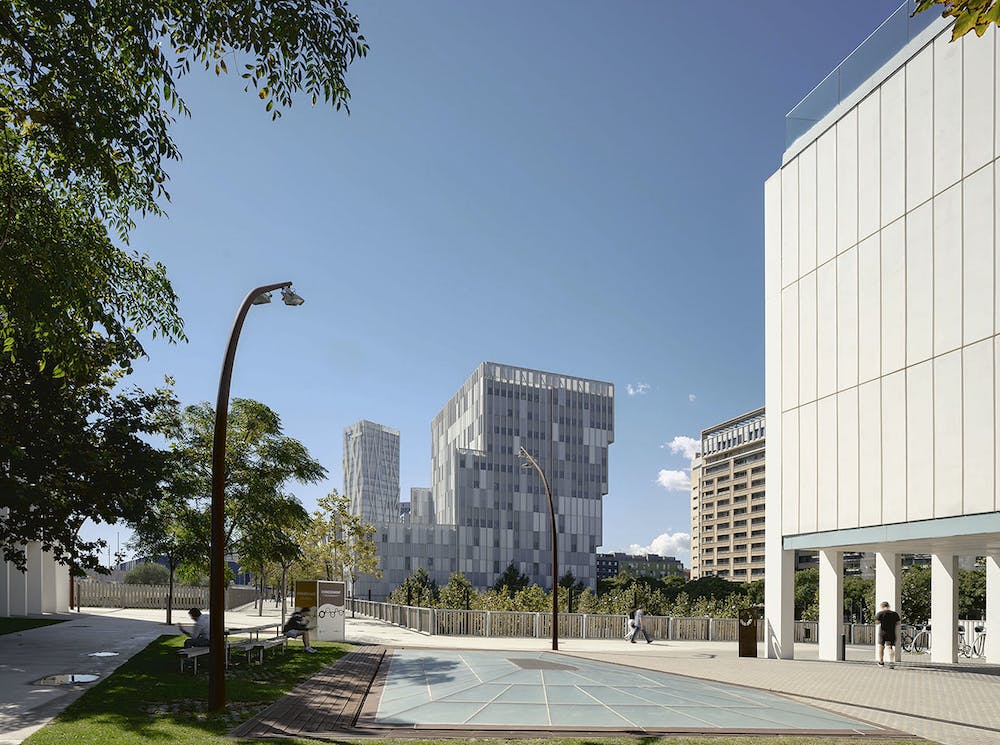
Avinguda Meridiana
Avinguda Meridiana. Sant Martí and Sant Andreu

Diagonal-Besòs University Campus
Av. Eduard Maristany. Sant Martí

Avinguda Meridiana
Avinguda Meridiana. Sant Martí and Sant Andreu

Opening Up the Streets. Gràcia
C/Gran de Gràcia. Gràcia

Poblenou superblock
Poblenou. Sant Martí

New bike lanes
Various layouts

Poblenou superblock
Poblenou. Sant Martí

Sant Antoni superblock
Sant Antoni. L’Eixample
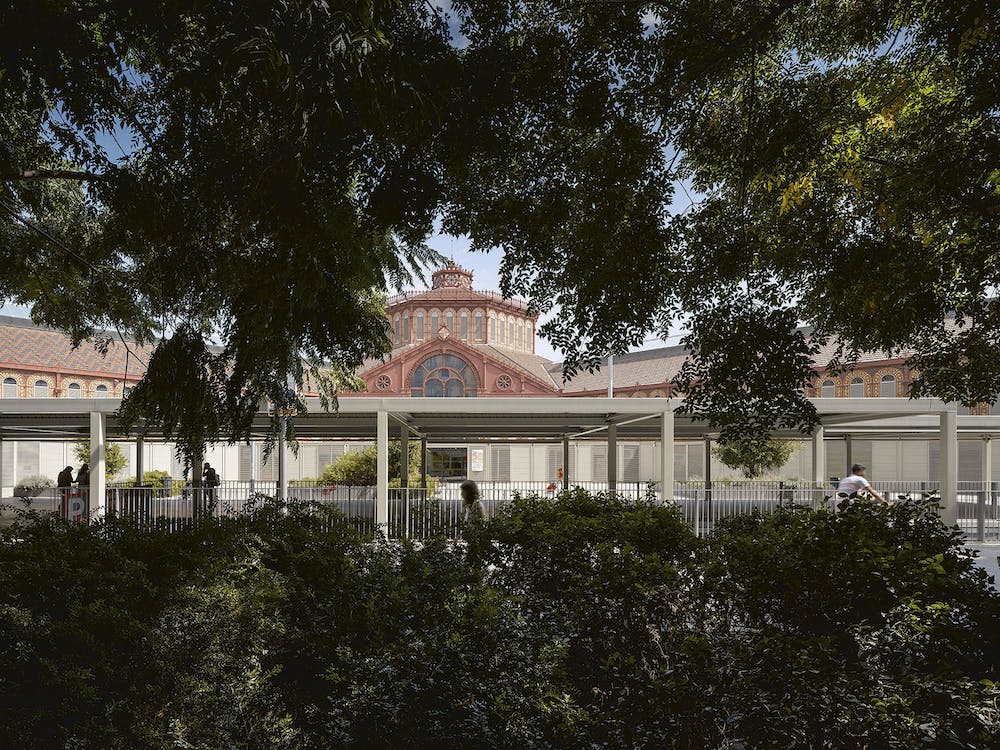
Pere IV hub
C/Pere IV. Sant Martí
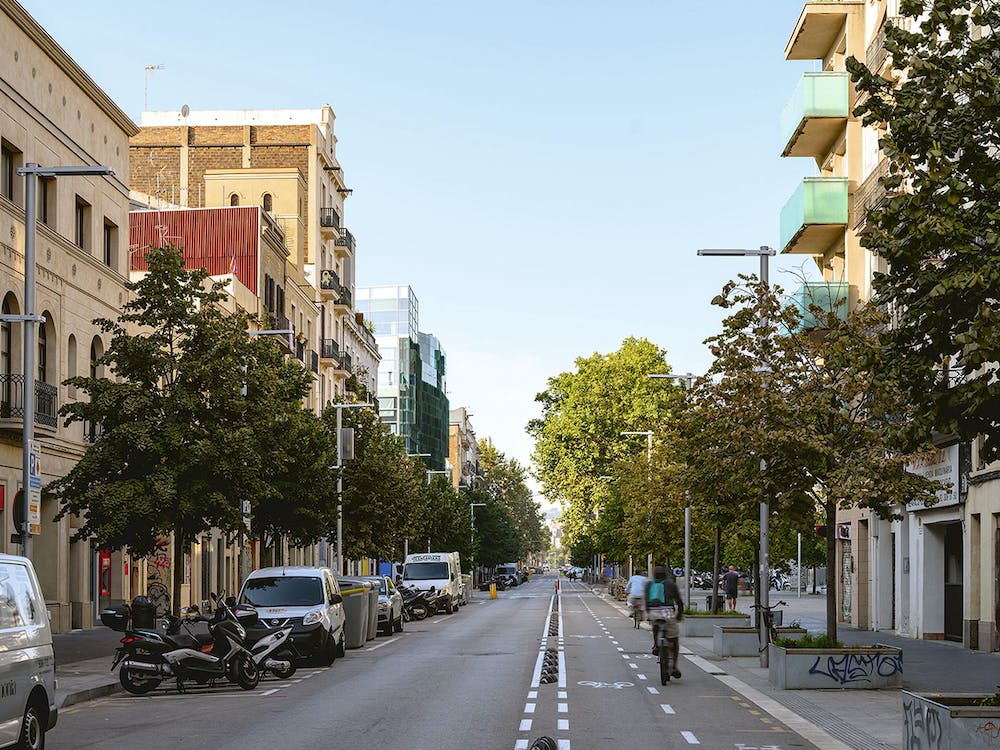
La Marina Skatepark
Pg. Zona Franca, 99. Sants-Montjuïc

Olympic port
Moll de Mestral wharf. Sant Martí

Protecting the historical fabric of Gràcia
Gràcia old town. Gràcia

Opening Up the Streets. Gràcia
C/Gran de Gràcia. Gràcia
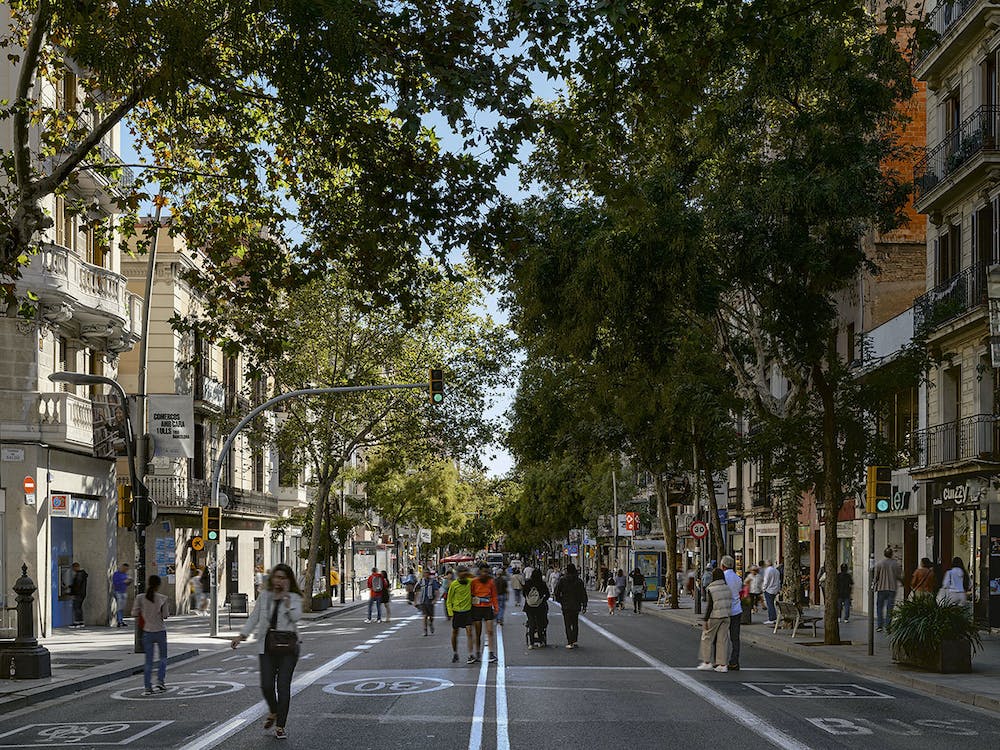
New bike lanes
Various layouts
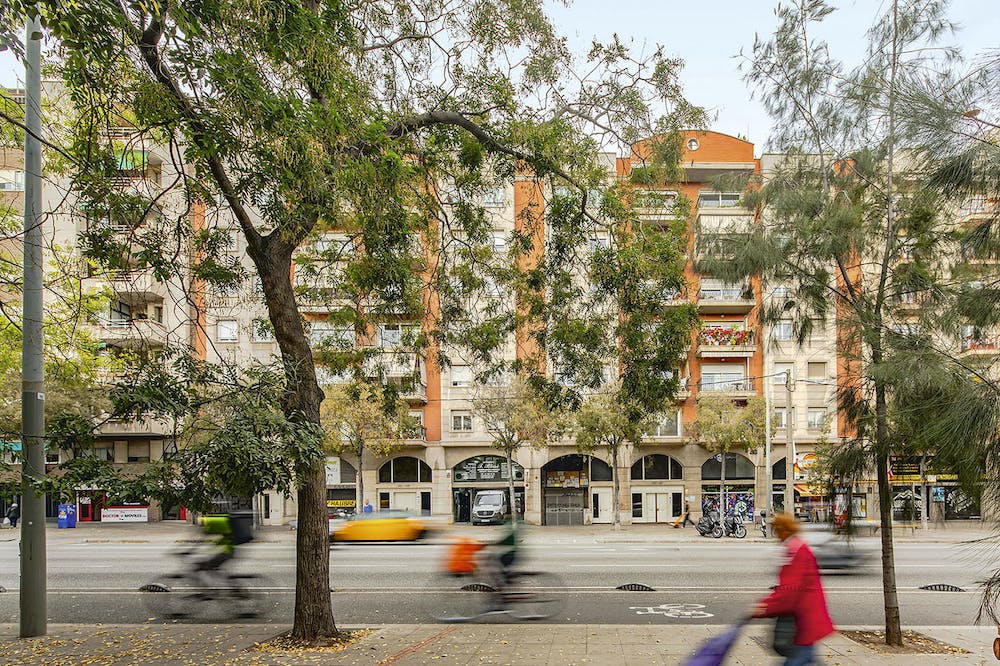
New bike lanes
Various layouts
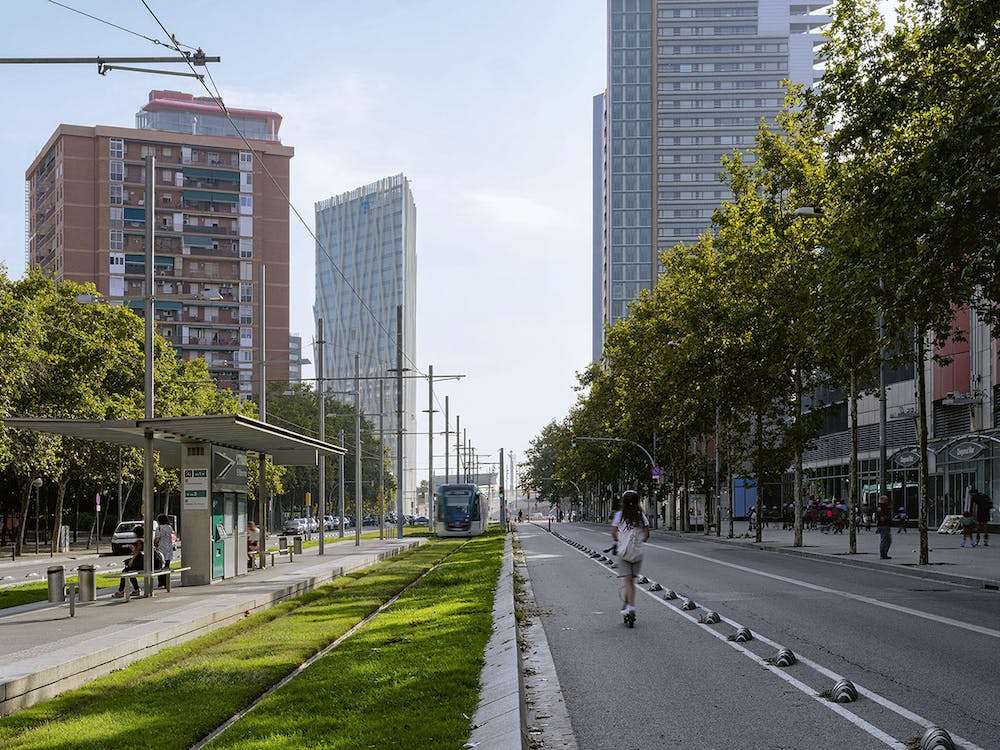
Protecting the historical fabric of Gràcia
Gràcia old town. Gràcia

Opening Up the Streets. Gràcia
C/Gran de Gràcia. Gràcia

Sant Antoni superblock
Sant Antoni. L’Eixample
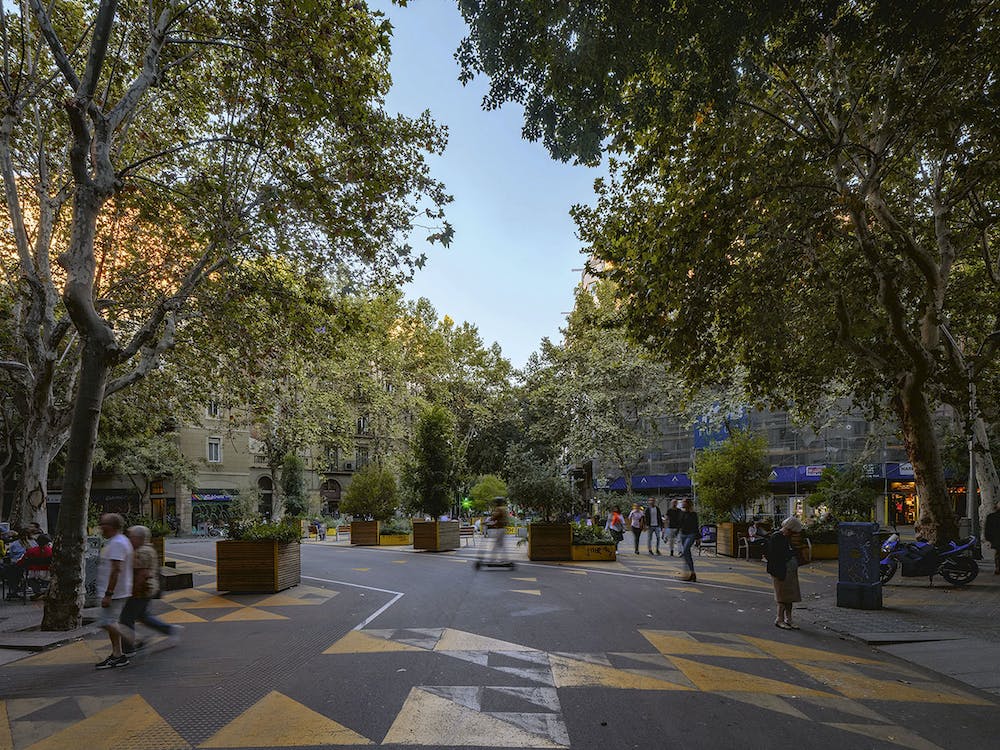
Future Plan for the historical fabric of Can Peguera
District of Can Peguera. Nou Barris

Poblenou superblock
Poblenou. Sant Martí

Protecting the historical fabric of Gràcia
Gràcia old town. Gràcia
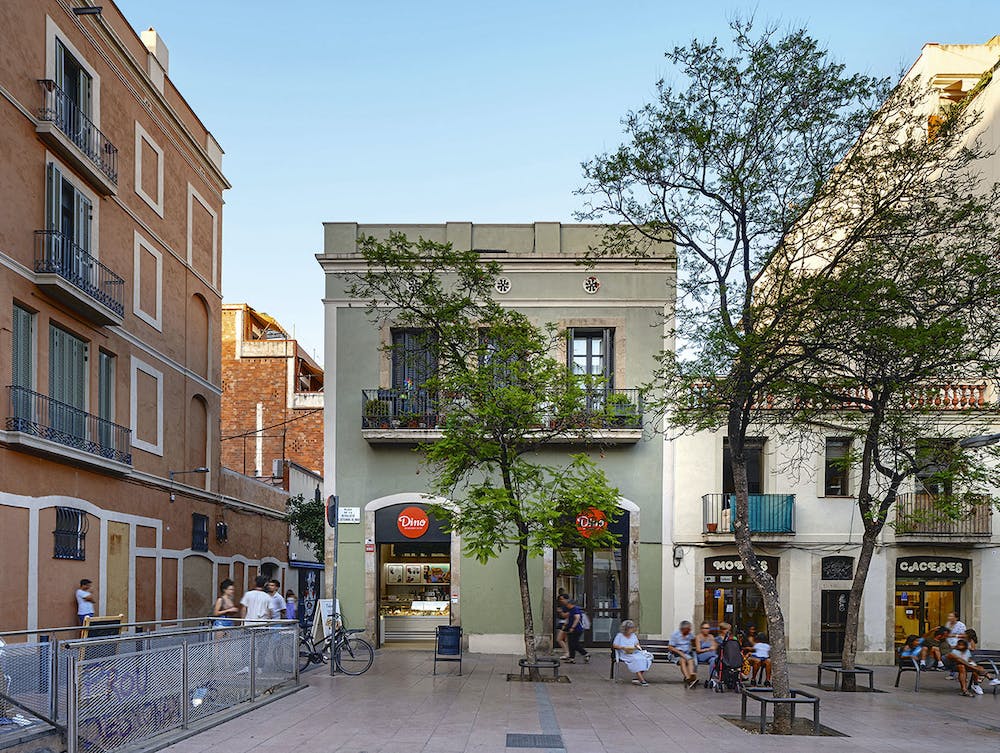
Sant Antoni superblock
Sant Antoni. L’Eixample
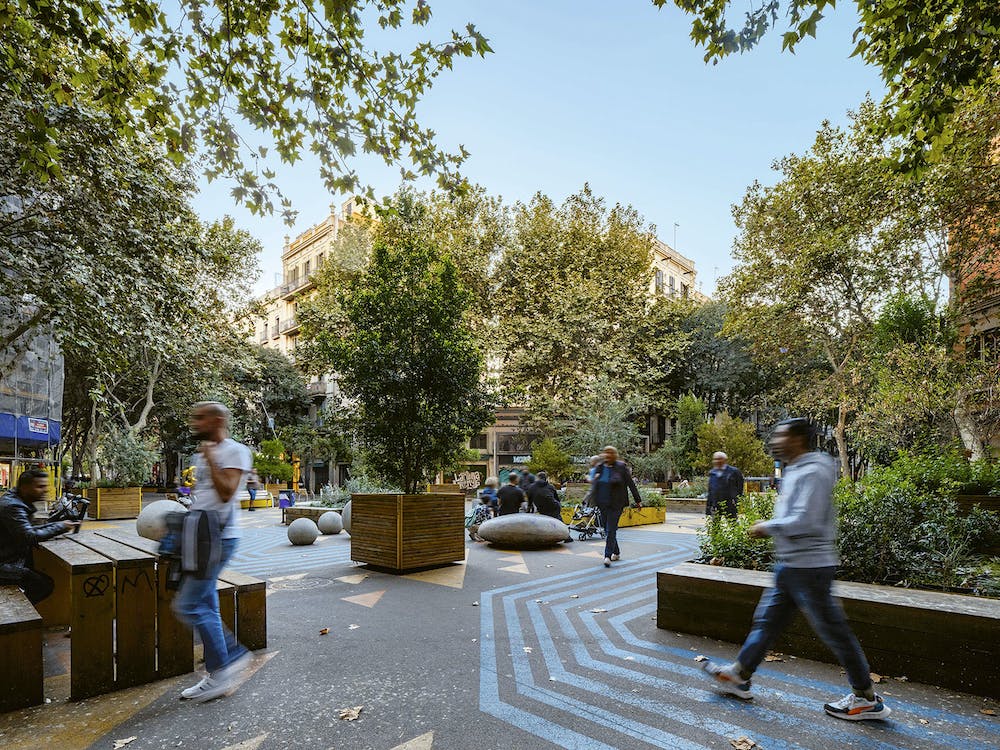
Carrer Gran de Sant Andreu
C/Gran de Sant Andreu. Sant Andreu
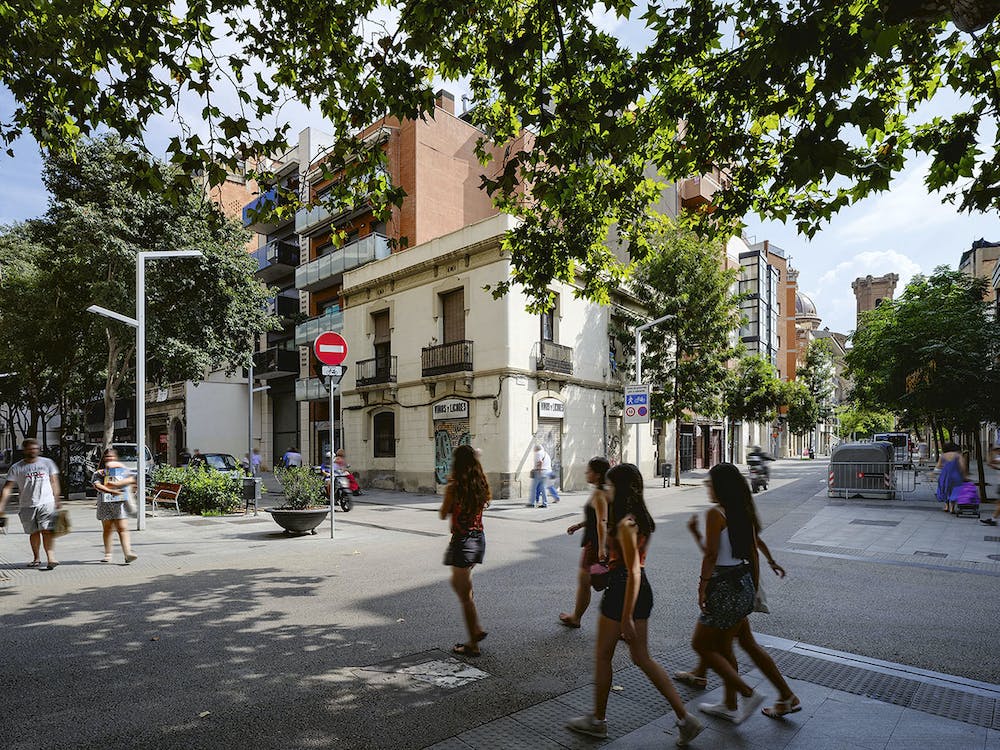
Sant Antoni superblock
Sant Antoni. L’Eixample

Sant Antoni superblock
Sant Antoni. L’Eixample

Carrer Gran de Sant Andreu
C/Gran de Sant Andreu. Sant Andreu

Olympic port
Moll de Mestral wharf. Sant Martí

Future Plan for the historical fabric of Can Peguera
District of Can Peguera. Nou Barris

Plaça de Sant Miquel
Pl. Sant Miquel. Ciutat Vella

New bike lanes
Various layouts

Opening Up the Streets. Sants
C/Sants. Sants-Montjuïc

Protecting the historical fabric of Gràcia
Gràcia old town. Gràcia

Terrace extensions
Various sites

[{"image":{"large":{"url":"https://images.prismic.io/surveybcn/pps_avinguda_meridiana_112.jpg?auto=compress,format&rect=0,0,2087,1565&w=2087&h=1565","localUrl":"/surveyfotografic/common/images/pps_avinguda_meridiana_112.jpg","width":2087,"height":1565},"scaled":{"url":"https://images.prismic.io/surveybcn/pps_avinguda_meridiana_112.jpg?auto=compress,format&rect=0,0,2087,1565&w=1000&h=750","localUrl":"/surveyfotografic/common/images/pps_avinguda_meridiana_112_s.jpg","width":1000,"height":750}},"project":{"meta":{"url":"/surveyfotografic/en/project/avinguda_meridiana"},"body":{"name":"Avinguda Meridiana","address":"Avinguda Meridiana. Sant Martí and Sant Andreu"}}},{"image":{"large":{"url":"https://images.prismic.io/surveybcn/pps_avinguda_meridiana-2_111.jpg?auto=compress,format&rect=0,0,2701,2034&w=2701&h=2034","localUrl":"/surveyfotografic/common/images/pps_avinguda_meridiana-2_111.jpg","width":2701,"height":2034},"scaled":{"url":"https://images.prismic.io/surveybcn/pps_avinguda_meridiana-2_111.jpg?auto=compress,format&rect=0,0,2701,2034&w=1000&h=753","localUrl":"/surveyfotografic/common/images/pps_avinguda_meridiana-2_111_s.jpg","width":1000,"height":753}},"project":{"meta":{"url":"/surveyfotografic/en/project/avinguda_meridiana"},"body":{"name":"Avinguda Meridiana","address":"Avinguda Meridiana. Sant Martí and Sant Andreu"}}},{"image":{"large":{"url":"https://images.prismic.io/surveybcn/pps_avinguda_meridiana_03_113.jpg?auto=compress,format&rect=0,0,2745,2059&w=2745&h=2059","localUrl":"/surveyfotografic/common/images/pps_avinguda_meridiana_03_113.jpg","width":2745,"height":2059},"scaled":{"url":"https://images.prismic.io/surveybcn/pps_avinguda_meridiana_03_113.jpg?auto=compress,format&rect=0,0,2745,2059&w=1000&h=750","localUrl":"/surveyfotografic/common/images/pps_avinguda_meridiana_03_113_s.jpg","width":1000,"height":750}},"project":{"meta":{"url":"/surveyfotografic/en/project/avinguda_meridiana"},"body":{"name":"Avinguda Meridiana","address":"Avinguda Meridiana. Sant Martí and Sant Andreu"}}},{"image":{"large":{"url":"https://images.prismic.io/surveybcn/pps_avinguda_meridiana_04_114.jpg?auto=compress,format&rect=0,0,2097,1573&w=2097&h=1573","localUrl":"/surveyfotografic/common/images/pps_avinguda_meridiana_04_114.jpg","width":2097,"height":1573},"scaled":{"url":"https://images.prismic.io/surveybcn/pps_avinguda_meridiana_04_114.jpg?auto=compress,format&rect=0,0,2097,1573&w=1000&h=750","localUrl":"/surveyfotografic/common/images/pps_avinguda_meridiana_04_114_s.jpg","width":1000,"height":750}},"project":{"meta":{"url":"/surveyfotografic/en/project/avinguda_meridiana"},"body":{"name":"Avinguda Meridiana","address":"Avinguda Meridiana. Sant Martí and Sant Andreu"}}},{"image":{"large":{"url":"https://images.prismic.io/surveybcn/pps_superilla_poblenou_379.jpg?auto=compress,format&rect=0,0,2074,1556&w=2074&h=1556","localUrl":"/surveyfotografic/common/images/pps_superilla_poblenou_379.jpg","width":2074,"height":1556},"scaled":{"url":"https://images.prismic.io/surveybcn/pps_superilla_poblenou_379.jpg?auto=compress,format&rect=0,0,2074,1556&w=1000&h=750","localUrl":"/surveyfotografic/common/images/pps_superilla_poblenou_379_s.jpg","width":1000,"height":750}},"project":{"meta":{"url":"/surveyfotografic/en/project/superilla_poblenou"},"body":{"name":"Poblenou superblock","address":"Poblenou. Sant Martí"}}},{"image":{"large":{"url":"https://images.prismic.io/surveybcn/pps_superilla_poblenou_02_380.jpg?auto=compress,format&rect=0,0,2084,1563&w=2084&h=1563","localUrl":"/surveyfotografic/common/images/pps_superilla_poblenou_02_380.jpg","width":2084,"height":1563},"scaled":{"url":"https://images.prismic.io/surveybcn/pps_superilla_poblenou_02_380.jpg?auto=compress,format&rect=0,0,2084,1563&w=1000&h=750","localUrl":"/surveyfotografic/common/images/pps_superilla_poblenou_02_380_s.jpg","width":1000,"height":750}},"project":{"meta":{"url":"/surveyfotografic/en/project/superilla_poblenou"},"body":{"name":"Poblenou superblock","address":"Poblenou. Sant Martí"}}},{"image":{"large":{"url":"https://images.prismic.io/surveybcn/pps_superilla_poblenou_03_381.jpg?auto=compress,format&rect=0,0,2097,1573&w=2097&h=1573","localUrl":"/surveyfotografic/common/images/pps_superilla_poblenou_03_381.jpg","width":2097,"height":1573},"scaled":{"url":"https://images.prismic.io/surveybcn/pps_superilla_poblenou_03_381.jpg?auto=compress,format&rect=0,0,2097,1573&w=1000&h=750","localUrl":"/surveyfotografic/common/images/pps_superilla_poblenou_03_381_s.jpg","width":1000,"height":750}},"project":{"meta":{"url":"/surveyfotografic/en/project/superilla_poblenou"},"body":{"name":"Poblenou superblock","address":"Poblenou. Sant Martí"}}},{"image":{"large":{"url":"https://images.prismic.io/surveybcn/pps_port_olimpic_415.jpg?auto=compress,format&rect=0,0,2693,2020&w=2693&h=2020","localUrl":"/surveyfotografic/common/images/pps_port_olimpic_415.jpg","width":2693,"height":2020},"scaled":{"url":"https://images.prismic.io/surveybcn/pps_port_olimpic_415.jpg?auto=compress,format&rect=0,0,2693,2020&w=1000&h=750","localUrl":"/surveyfotografic/common/images/pps_port_olimpic_415_s.jpg","width":1000,"height":750}},"project":{"meta":{"url":"/surveyfotografic/en/project/port_olimpic"},"body":{"name":"Olympic port","address":"Moll de Mestral wharf. Sant Martí"}}},{"image":{"large":{"url":"https://images.prismic.io/surveybcn/pps_skatepark_6.jpg?auto=compress,format&rect=0,0,3318,2489&w=3318&h=2489","localUrl":"/surveyfotografic/common/images/pps_skatepark_6.jpg","width":3318,"height":2489},"scaled":{"url":"https://images.prismic.io/surveybcn/pps_skatepark_6.jpg?auto=compress,format&rect=0,0,3318,2489&w=1000&h=750","localUrl":"/surveyfotografic/common/images/pps_skatepark_6_s.jpg","width":1000,"height":750}},"project":{"meta":{"url":"/surveyfotografic/en/project/skatepark_marina"},"body":{"name":"La Marina Skatepark","address":"Pg. Zona Franca, 99. Sants-Montjuïc"}}},{"image":{"large":{"url":"https://images.prismic.io/surveybcn/pps_port_olimpic_02_416.jpg?auto=compress,format&rect=0,0,2796,2097&w=2796&h=2097","localUrl":"/surveyfotografic/common/images/pps_port_olimpic_02_416.jpg","width":2796,"height":2097},"scaled":{"url":"https://images.prismic.io/surveybcn/pps_port_olimpic_02_416.jpg?auto=compress,format&rect=0,0,2796,2097&w=1000&h=750","localUrl":"/surveyfotografic/common/images/pps_port_olimpic_02_416_s.jpg","width":1000,"height":750}},"project":{"meta":{"url":"/surveyfotografic/en/project/port_olimpic"},"body":{"name":"Olympic port","address":"Moll de Mestral wharf. Sant Martí"}}},{"image":{"large":{"url":"https://images.prismic.io/surveybcn/pps_campus_diagonal-besos_396.jpg?auto=compress,format&rect=0,0,2097,1573&w=2097&h=1573","localUrl":"/surveyfotografic/common/images/pps_campus_diagonal-besos_396.jpg","width":2097,"height":1573},"scaled":{"url":"https://images.prismic.io/surveybcn/pps_campus_diagonal-besos_396.jpg?auto=compress,format&rect=0,0,2097,1573&w=1000&h=750","localUrl":"/surveyfotografic/common/images/pps_campus_diagonal-besos_396_s.jpg","width":1000,"height":750}},"project":{"meta":{"url":"/surveyfotografic/en/project/campus_diagonal_besos"},"body":{"name":"Diagonal-Besòs University Campus","address":"Av. Eduard Maristany. Sant Martí"}}},{"image":{"large":{"url":"https://images.prismic.io/surveybcn/pps_carrer_gran_de_sant_andreu_127.jpg?auto=compress,format&rect=0,0,1995,1482&w=1995&h=1482","localUrl":"/surveyfotografic/common/images/pps_carrer_gran_de_sant_andreu_127.jpg","width":1995,"height":1482},"scaled":{"url":"https://images.prismic.io/surveybcn/pps_carrer_gran_de_sant_andreu_127.jpg?auto=compress,format&rect=0,0,1995,1482&w=1000&h=743","localUrl":"/surveyfotografic/common/images/pps_carrer_gran_de_sant_andreu_127_s.jpg","width":1000,"height":743}},"project":{"meta":{"url":"/surveyfotografic/en/project/gran_de_sant_andreu"},"body":{"name":"Carrer Gran de Sant Andreu","address":"C/Gran de Sant Andreu. Sant Andreu"}}},{"image":{"large":{"url":"https://images.prismic.io/surveybcn/pps_superilla_sant_antoni_03_447.jpg?auto=compress,format&rect=0,0,1274,955&w=1274&h=955","localUrl":"/surveyfotografic/common/images/pps_superilla_sant_antoni_03_447.jpg","width":1274,"height":955},"scaled":{"url":"https://images.prismic.io/surveybcn/pps_superilla_sant_antoni_03_447.jpg?auto=compress,format&rect=0,0,1273,955&w=1000&h=750","localUrl":"/surveyfotografic/common/images/pps_superilla_sant_antoni_03_447_s.jpg","width":1000,"height":750}},"project":{"meta":{"url":"/surveyfotografic/en/project/superilla_sant_antoni"},"body":{"name":"Sant Antoni superblock","address":"Sant Antoni. L’Eixample"}}},{"image":{"large":{"url":"https://images.prismic.io/surveybcn/pps_superilla_sant_antoni_02_441.jpg?auto=compress,format&rect=0,0,2097,1573&w=2097&h=1573","localUrl":"/surveyfotografic/common/images/pps_superilla_sant_antoni_02_441.jpg","width":2097,"height":1573},"scaled":{"url":"https://images.prismic.io/surveybcn/pps_superilla_sant_antoni_02_441.jpg?auto=compress,format&rect=0,0,2097,1573&w=1000&h=750","localUrl":"/surveyfotografic/common/images/pps_superilla_sant_antoni_02_441_s.jpg","width":1000,"height":750}},"project":{"meta":{"url":"/surveyfotografic/en/project/superilla_sant_antoni"},"body":{"name":"Sant Antoni superblock","address":"Sant Antoni. L’Eixample"}}},{"image":{"large":{"url":"https://images.prismic.io/surveybcn/pps_superilla_sant_antoni_03_442.jpg?auto=compress,format&rect=0,0,2097,1573&w=2097&h=1573","localUrl":"/surveyfotografic/common/images/pps_superilla_sant_antoni_03_442.jpg","width":2097,"height":1573},"scaled":{"url":"https://images.prismic.io/surveybcn/pps_superilla_sant_antoni_03_442.jpg?auto=compress,format&rect=0,0,2097,1573&w=1000&h=750","localUrl":"/surveyfotografic/common/images/pps_superilla_sant_antoni_03_442_s.jpg","width":1000,"height":750}},"project":{"meta":{"url":"/surveyfotografic/en/project/superilla_sant_antoni"},"body":{"name":"Sant Antoni superblock","address":"Sant Antoni. L’Eixample"}}},{"image":{"large":{"url":"https://images.prismic.io/surveybcn/pps_superilla_sant_antoni_04_443.jpg?auto=compress,format&rect=0,0,2097,1573&w=2097&h=1573","localUrl":"/surveyfotografic/common/images/pps_superilla_sant_antoni_04_443.jpg","width":2097,"height":1573},"scaled":{"url":"https://images.prismic.io/surveybcn/pps_superilla_sant_antoni_04_443.jpg?auto=compress,format&rect=0,0,2097,1573&w=1000&h=750","localUrl":"/surveyfotografic/common/images/pps_superilla_sant_antoni_04_443_s.jpg","width":1000,"height":750}},"project":{"meta":{"url":"/surveyfotografic/en/project/superilla_sant_antoni"},"body":{"name":"Sant Antoni superblock","address":"Sant Antoni. L’Eixample"}}},{"image":{"large":{"url":"https://images.prismic.io/surveybcn/pps_superilla_sant_antoni_05_444.jpg?auto=compress,format&rect=0,0,2097,1573&w=2097&h=1573","localUrl":"/surveyfotografic/common/images/pps_superilla_sant_antoni_05_444.jpg","width":2097,"height":1573},"scaled":{"url":"https://images.prismic.io/surveybcn/pps_superilla_sant_antoni_05_444.jpg?auto=compress,format&rect=0,0,2097,1573&w=1000&h=750","localUrl":"/surveyfotografic/common/images/pps_superilla_sant_antoni_05_444_s.jpg","width":1000,"height":750}},"project":{"meta":{"url":"/surveyfotografic/en/project/superilla_sant_antoni"},"body":{"name":"Sant Antoni superblock","address":"Sant Antoni. L’Eixample"}}},{"image":{"large":{"url":"https://images.prismic.io/surveybcn/pps_campus_besos_399.jpg?auto=compress,format&rect=0,0,1274,955&w=1274&h=955","localUrl":"/surveyfotografic/common/images/pps_campus_besos_399.jpg","width":1274,"height":955},"scaled":{"url":"https://images.prismic.io/surveybcn/pps_campus_besos_399.jpg?auto=compress,format&rect=0,0,1273,955&w=1000&h=750","localUrl":"/surveyfotografic/common/images/pps_campus_besos_399_s.jpg","width":1000,"height":750}},"project":{"meta":{"url":"/surveyfotografic/en/project/campus_diagonal_besos"},"body":{"name":"Diagonal-Besòs University Campus","address":"Av. Eduard Maristany. Sant Martí"}}},{"image":{"large":{"url":"https://images.prismic.io/surveybcn/pps_avda.meridiana_03_117.jpg?auto=compress,format&rect=0,0,1274,955&w=1274&h=955","localUrl":"/surveyfotografic/common/images/pps_avda.meridiana_03_117.jpg","width":1274,"height":955},"scaled":{"url":"https://images.prismic.io/surveybcn/pps_avda.meridiana_03_117.jpg?auto=compress,format&rect=0,0,1273,955&w=1000&h=750","localUrl":"/surveyfotografic/common/images/pps_avda.meridiana_03_117_s.jpg","width":1000,"height":750}},"project":{"meta":{"url":"/surveyfotografic/en/project/avinguda_meridiana"},"body":{"name":"Avinguda Meridiana","address":"Avinguda Meridiana. Sant Martí and Sant Andreu"}}},{"image":{"large":{"url":"https://images.prismic.io/surveybcn/pps_avda.meridiana_115.jpg?auto=compress,format&rect=0,0,1239,955&w=1239&h=955","localUrl":"/surveyfotografic/common/images/pps_avda.meridiana_115.jpg","width":1239,"height":955},"scaled":{"url":"https://images.prismic.io/surveybcn/pps_avda.meridiana_115.jpg?auto=compress,format&rect=0,0,1239,955&w=1000&h=771","localUrl":"/surveyfotografic/common/images/pps_avda.meridiana_115_s.jpg","width":1000,"height":771}},"project":{"meta":{"url":"/surveyfotografic/en/project/avinguda_meridiana"},"body":{"name":"Avinguda Meridiana","address":"Avinguda Meridiana. Sant Martí and Sant Andreu"}}},{"image":{"large":{"url":"https://images.prismic.io/surveybcn/pps_campus_besos._03_398.jpg?auto=compress,format&rect=0,0,1282,955&w=1282&h=955","localUrl":"/surveyfotografic/common/images/pps_campus_besos._03_398.jpg","width":1282,"height":955},"scaled":{"url":"https://images.prismic.io/surveybcn/pps_campus_besos._03_398.jpg?auto=compress,format&rect=0,0,1282,955&w=1000&h=745","localUrl":"/surveyfotografic/common/images/pps_campus_besos._03_398_s.jpg","width":1000,"height":745}},"project":{"meta":{"url":"/surveyfotografic/en/project/campus_diagonal_besos"},"body":{"name":"Diagonal-Besòs University Campus","address":"Av. Eduard Maristany. Sant Martí"}}},{"image":{"large":{"url":"https://images.prismic.io/surveybcn/pps_avda.meridiana_pedro_pegenaute_118.jpg?auto=compress,format&rect=0,0,1274,955&w=1274&h=955","localUrl":"/surveyfotografic/common/images/pps_avda.meridiana_pedro_pegenaute_118.jpg","width":1274,"height":955},"scaled":{"url":"https://images.prismic.io/surveybcn/pps_avda.meridiana_pedro_pegenaute_118.jpg?auto=compress,format&rect=0,0,1273,955&w=1000&h=750","localUrl":"/surveyfotografic/common/images/pps_avda.meridiana_pedro_pegenaute_118_s.jpg","width":1000,"height":750}},"project":{"meta":{"url":"/surveyfotografic/en/project/avinguda_meridiana"},"body":{"name":"Avinguda Meridiana","address":"Avinguda Meridiana. Sant Martí and Sant Andreu"}}},{"image":{"large":{"url":"https://images.prismic.io/surveybcn/pps_campus_besos._02_397.jpg?auto=compress,format&rect=0,0,1274,955&w=1274&h=955","localUrl":"/surveyfotografic/common/images/pps_campus_besos._02_397.jpg","width":1274,"height":955},"scaled":{"url":"https://images.prismic.io/surveybcn/pps_campus_besos._02_397.jpg?auto=compress,format&rect=0,0,1273,955&w=1000&h=750","localUrl":"/surveyfotografic/common/images/pps_campus_besos._02_397_s.jpg","width":1000,"height":750}},"project":{"meta":{"url":"/surveyfotografic/en/project/campus_diagonal_besos"},"body":{"name":"Diagonal-Besòs University Campus","address":"Av. Eduard Maristany. Sant Martí"}}},{"image":{"large":{"url":"https://images.prismic.io/surveybcn/pps_avda.meridiana_02_116.jpg?auto=compress,format&rect=0,0,1274,955&w=1274&h=955","localUrl":"/surveyfotografic/common/images/pps_avda.meridiana_02_116.jpg","width":1274,"height":955},"scaled":{"url":"https://images.prismic.io/surveybcn/pps_avda.meridiana_02_116.jpg?auto=compress,format&rect=0,0,1273,955&w=1000&h=750","localUrl":"/surveyfotografic/common/images/pps_avda.meridiana_02_116_s.jpg","width":1000,"height":750}},"project":{"meta":{"url":"/surveyfotografic/en/project/avinguda_meridiana"},"body":{"name":"Avinguda Meridiana","address":"Avinguda Meridiana. Sant Martí and Sant Andreu"}}},{"image":{"large":{"url":"https://images.prismic.io/surveybcn/pps_obrim_carrers_gran_gracia_7.jpg?auto=compress,format&rect=0,0,1274,955&w=1274&h=955","localUrl":"/surveyfotografic/common/images/pps_obrim_carrers_gran_gracia_7.jpg","width":1274,"height":955},"scaled":{"url":"https://images.prismic.io/surveybcn/pps_obrim_carrers_gran_gracia_7.jpg?auto=compress,format&rect=0,0,1273,955&w=1000&h=750","localUrl":"/surveyfotografic/common/images/pps_obrim_carrers_gran_gracia_7_s.jpg","width":1000,"height":750}},"project":{"meta":{"url":"/surveyfotografic/en/project/obrim_carrers_gran_de_gracia"},"body":{"name":"Opening Up the Streets. Gràcia","address":"C/Gran de Gràcia. Gràcia"}}},{"image":{"large":{"url":"https://images.prismic.io/surveybcn/pps_superilla_poblenou_382.jpg?auto=compress,format&rect=0,0,1274,955&w=1274&h=955","localUrl":"/surveyfotografic/common/images/pps_superilla_poblenou_382.jpg","width":1274,"height":955},"scaled":{"url":"https://images.prismic.io/surveybcn/pps_superilla_poblenou_382.jpg?auto=compress,format&rect=0,0,1273,955&w=1000&h=750","localUrl":"/surveyfotografic/common/images/pps_superilla_poblenou_382_s.jpg","width":1000,"height":750}},"project":{"meta":{"url":"/surveyfotografic/en/project/superilla_poblenou"},"body":{"name":"Poblenou superblock","address":"Poblenou. Sant Martí"}}},{"image":{"large":{"url":"https://images.prismic.io/surveybcn/pps_nous_carriles_bici_diagonal_350.jpg?auto=compress,format&rect=0,0,1593,1194&w=1593&h=1194","localUrl":"/surveyfotografic/common/images/pps_nous_carriles_bici_diagonal_350.jpg","width":1593,"height":1194},"scaled":{"url":"https://images.prismic.io/surveybcn/pps_nous_carriles_bici_diagonal_350.jpg?auto=compress,format&rect=0,0,1592,1194&w=1000&h=750","localUrl":"/surveyfotografic/common/images/pps_nous_carriles_bici_diagonal_350_s.jpg","width":1000,"height":750}},"project":{"meta":{"url":"/surveyfotografic/en/project/nous-carrils-bici"},"body":{"name":"New bike lanes","address":"Various layouts"}}},{"image":{"large":{"url":"https://images.prismic.io/surveybcn/pps_superilla_poblenou_03_384.jpg?auto=compress,format&rect=0,0,1274,955&w=1274&h=955","localUrl":"/surveyfotografic/common/images/pps_superilla_poblenou_03_384.jpg","width":1274,"height":955},"scaled":{"url":"https://images.prismic.io/surveybcn/pps_superilla_poblenou_03_384.jpg?auto=compress,format&rect=0,0,1273,955&w=1000&h=750","localUrl":"/surveyfotografic/common/images/pps_superilla_poblenou_03_384_s.jpg","width":1000,"height":750}},"project":{"meta":{"url":"/surveyfotografic/en/project/superilla_poblenou"},"body":{"name":"Poblenou superblock","address":"Poblenou. Sant Martí"}}},{"image":{"large":{"url":"https://images.prismic.io/surveybcn/pps_superilla_sant_antoni_05_449.jpg?auto=compress,format&rect=0,0,1593,1194&w=1593&h=1194","localUrl":"/surveyfotografic/common/images/pps_superilla_sant_antoni_05_449.jpg","width":1593,"height":1194},"scaled":{"url":"https://images.prismic.io/surveybcn/pps_superilla_sant_antoni_05_449.jpg?auto=compress,format&rect=0,0,1592,1194&w=1000&h=750","localUrl":"/surveyfotografic/common/images/pps_superilla_sant_antoni_05_449_s.jpg","width":1000,"height":750}},"project":{"meta":{"url":"/surveyfotografic/en/project/superilla_sant_antoni"},"body":{"name":"Sant Antoni superblock","address":"Sant Antoni. L’Eixample"}}},{"image":{"large":{"url":"https://images.prismic.io/surveybcn/pps_eix_pere_iv_347.jpg?auto=compress,format&rect=0,0,1274,955&w=1274&h=955","localUrl":"/surveyfotografic/common/images/pps_eix_pere_iv_347.jpg","width":1274,"height":955},"scaled":{"url":"https://images.prismic.io/surveybcn/pps_eix_pere_iv_347.jpg?auto=compress,format&rect=0,0,1273,955&w=1000&h=750","localUrl":"/surveyfotografic/common/images/pps_eix_pere_iv_347_s.jpg","width":1000,"height":750}},"project":{"meta":{"url":"/surveyfotografic/en/project/eix_pere_iv"},"body":{"name":"Pere IV hub","address":"C/Pere IV. Sant Martí"}}},{"image":{"large":{"url":"https://images.prismic.io/surveybcn/pps_skatepark_5.jpg?auto=compress,format&rect=0,0,2796,2097&w=2796&h=2097","localUrl":"/surveyfotografic/common/images/pps_skatepark_5.jpg","width":2796,"height":2097},"scaled":{"url":"https://images.prismic.io/surveybcn/pps_skatepark_5.jpg?auto=compress,format&rect=0,0,2796,2097&w=1000&h=750","localUrl":"/surveyfotografic/common/images/pps_skatepark_5_s.jpg","width":1000,"height":750}},"project":{"meta":{"url":"/surveyfotografic/en/project/skatepark_marina"},"body":{"name":"La Marina Skatepark","address":"Pg. Zona Franca, 99. Sants-Montjuïc"}}},{"image":{"large":{"url":"https://images.prismic.io/surveybcn/pps_puerto_olimpico_02_418.jpg?auto=compress,format&rect=0,0,3319,2489&w=3319&h=2489","localUrl":"/surveyfotografic/common/images/pps_puerto_olimpico_02_418.jpg","width":3319,"height":2489},"scaled":{"url":"https://images.prismic.io/surveybcn/pps_puerto_olimpico_02_418.jpg?auto=compress,format&rect=0,0,3319,2489&w=1000&h=750","localUrl":"/surveyfotografic/common/images/pps_puerto_olimpico_02_418_s.jpg","width":1000,"height":750}},"project":{"meta":{"url":"/surveyfotografic/en/project/port_olimpic"},"body":{"name":"Olympic port","address":"Moll de Mestral wharf. Sant Martí"}}},{"image":{"large":{"url":"https://images.prismic.io/surveybcn/pps_teixit_historic_gracia_04_17.jpg?auto=compress,format&rect=0,0,1258,955&w=1258&h=955","localUrl":"/surveyfotografic/common/images/pps_teixit_historic_gracia_04_17.jpg","width":1258,"height":955},"scaled":{"url":"https://images.prismic.io/surveybcn/pps_teixit_historic_gracia_04_17.jpg?auto=compress,format&rect=0,0,1258,955&w=1000&h=759","localUrl":"/surveyfotografic/common/images/pps_teixit_historic_gracia_04_17_s.jpg","width":1000,"height":759}},"project":{"meta":{"url":"/surveyfotografic/en/project/teixit_historic_gracia"},"body":{"name":"Protecting the historical fabric of Gràcia","address":"Gràcia old town. Gràcia"}}},{"image":{"large":{"url":"https://images.prismic.io/surveybcn/pps_obrim_carrers_gran_gracia_03_9.jpg?auto=compress,format&rect=0,0,1274,955&w=1274&h=955","localUrl":"/surveyfotografic/common/images/pps_obrim_carrers_gran_gracia_03_9.jpg","width":1274,"height":955},"scaled":{"url":"https://images.prismic.io/surveybcn/pps_obrim_carrers_gran_gracia_03_9.jpg?auto=compress,format&rect=0,0,1273,955&w=1000&h=750","localUrl":"/surveyfotografic/common/images/pps_obrim_carrers_gran_gracia_03_9_s.jpg","width":1000,"height":750}},"project":{"meta":{"url":"/surveyfotografic/en/project/obrim_carrers_gran_de_gracia"},"body":{"name":"Opening Up the Streets. Gràcia","address":"C/Gran de Gràcia. Gràcia"}}},{"image":{"large":{"url":"https://images.prismic.io/surveybcn/pps_nou_carril-bici-arago_348.jpg?auto=compress,format&rect=0,0,1434,955&w=1434&h=955","localUrl":"/surveyfotografic/common/images/pps_nou_carril-bici-arago_348.jpg","width":1434,"height":955},"scaled":{"url":"https://images.prismic.io/surveybcn/pps_nou_carril-bici-arago_348.jpg?auto=compress,format&rect=0,0,1434,955&w=1000&h=666","localUrl":"/surveyfotografic/common/images/pps_nou_carril-bici-arago_348_s.jpg","width":1000,"height":666}},"project":{"meta":{"url":"/surveyfotografic/en/project/nous-carrils-bici"},"body":{"name":"New bike lanes","address":"Various layouts"}}},{"image":{"large":{"url":"https://images.prismic.io/surveybcn/pps_nous_carriles_bici_diagonal_pedro_pegenaute_351.jpg?auto=compress,format&rect=0,0,1274,955&w=1274&h=955","localUrl":"/surveyfotografic/common/images/pps_nous_carriles_bici_diagonal_pedro_pegenaute_351.jpg","width":1274,"height":955},"scaled":{"url":"https://images.prismic.io/surveybcn/pps_nous_carriles_bici_diagonal_pedro_pegenaute_351.jpg?auto=compress,format&rect=0,0,1273,955&w=1000&h=750","localUrl":"/surveyfotografic/common/images/pps_nous_carriles_bici_diagonal_pedro_pegenaute_351_s.jpg","width":1000,"height":750}},"project":{"meta":{"url":"/surveyfotografic/en/project/nous-carrils-bici"},"body":{"name":"New bike lanes","address":"Various layouts"}}},{"image":{"large":{"url":"https://images.prismic.io/surveybcn/pps_teixit_historic_gracia_14.jpg?auto=compress,format&rect=0,0,1245,955&w=1245&h=955","localUrl":"/surveyfotografic/common/images/pps_teixit_historic_gracia_14.jpg","width":1245,"height":955},"scaled":{"url":"https://images.prismic.io/surveybcn/pps_teixit_historic_gracia_14.jpg?auto=compress,format&rect=0,0,1245,955&w=1000&h=767","localUrl":"/surveyfotografic/common/images/pps_teixit_historic_gracia_14_s.jpg","width":1000,"height":767}},"project":{"meta":{"url":"/surveyfotografic/en/project/teixit_historic_gracia"},"body":{"name":"Protecting the historical fabric of Gràcia","address":"Gràcia old town. Gràcia"}}},{"image":{"large":{"url":"https://images.prismic.io/surveybcn/pps_obrim_carrers_gran_gracia_02_8.jpg?auto=compress,format&rect=0,0,1019,765&w=1019&h=765","localUrl":"/surveyfotografic/common/images/pps_obrim_carrers_gran_gracia_02_8.jpg","width":1019,"height":765},"scaled":{"url":"https://images.prismic.io/surveybcn/pps_obrim_carrers_gran_gracia_02_8.jpg?auto=compress,format&rect=0,0,1019,765&w=1000&h=751","localUrl":"/surveyfotografic/common/images/pps_obrim_carrers_gran_gracia_02_8_s.jpg","width":1000,"height":751}},"project":{"meta":{"url":"/surveyfotografic/en/project/obrim_carrers_gran_de_gracia"},"body":{"name":"Opening Up the Streets. Gràcia","address":"C/Gran de Gràcia. Gràcia"}}},{"image":{"large":{"url":"https://images.prismic.io/surveybcn/pps_superilla_sant_antoni_445.jpg?auto=compress,format&rect=0,0,1274,955&w=1274&h=955","localUrl":"/surveyfotografic/common/images/pps_superilla_sant_antoni_445.jpg","width":1274,"height":955},"scaled":{"url":"https://images.prismic.io/surveybcn/pps_superilla_sant_antoni_445.jpg?auto=compress,format&rect=0,0,1273,955&w=1000&h=750","localUrl":"/surveyfotografic/common/images/pps_superilla_sant_antoni_445_s.jpg","width":1000,"height":750}},"project":{"meta":{"url":"/surveyfotografic/en/project/superilla_sant_antoni"},"body":{"name":"Sant Antoni superblock","address":"Sant Antoni. L’Eixample"}}},{"image":{"large":{"url":"https://images.prismic.io/surveybcn/pps_can_peguera_01_82.jpg?auto=compress,format&rect=0,0,1274,955&w=1274&h=955","localUrl":"/surveyfotografic/common/images/pps_can_peguera_01_82.jpg","width":1274,"height":955},"scaled":{"url":"https://images.prismic.io/surveybcn/pps_can_peguera_01_82.jpg?auto=compress,format&rect=0,0,1273,955&w=1000&h=750","localUrl":"/surveyfotografic/common/images/pps_can_peguera_01_82_s.jpg","width":1000,"height":750}},"project":{"meta":{"url":"/surveyfotografic/en/project/teixit_historic_can_peguera"},"body":{"name":"Future Plan for the historical fabric of Can Peguera","address":"District of Can Peguera. Nou Barris"}}},{"image":{"large":{"url":"https://images.prismic.io/surveybcn/pps_superilla_poblenou_02_383.jpg?auto=compress,format&rect=0,0,1274,955&w=1274&h=955","localUrl":"/surveyfotografic/common/images/pps_superilla_poblenou_02_383.jpg","width":1274,"height":955},"scaled":{"url":"https://images.prismic.io/surveybcn/pps_superilla_poblenou_02_383.jpg?auto=compress,format&rect=0,0,1273,955&w=1000&h=750","localUrl":"/surveyfotografic/common/images/pps_superilla_poblenou_02_383_s.jpg","width":1000,"height":750}},"project":{"meta":{"url":"/surveyfotografic/en/project/superilla_poblenou"},"body":{"name":"Poblenou superblock","address":"Poblenou. Sant Martí"}}},{"image":{"large":{"url":"https://images.prismic.io/surveybcn/pps_teixit_historic_gracia_02_15.jpg?auto=compress,format&rect=0,0,1268,955&w=1268&h=955","localUrl":"/surveyfotografic/common/images/pps_teixit_historic_gracia_02_15.jpg","width":1268,"height":955},"scaled":{"url":"https://images.prismic.io/surveybcn/pps_teixit_historic_gracia_02_15.jpg?auto=compress,format&rect=0,0,1268,955&w=1000&h=753","localUrl":"/surveyfotografic/common/images/pps_teixit_historic_gracia_02_15_s.jpg","width":1000,"height":753}},"project":{"meta":{"url":"/surveyfotografic/en/project/teixit_historic_gracia"},"body":{"name":"Protecting the historical fabric of Gràcia","address":"Gràcia old town. Gràcia"}}},{"image":{"large":{"url":"https://images.prismic.io/surveybcn/pps_superilla_sant_antoni_02_446.jpg?auto=compress,format&rect=0,0,1593,1194&w=1593&h=1194","localUrl":"/surveyfotografic/common/images/pps_superilla_sant_antoni_02_446.jpg","width":1593,"height":1194},"scaled":{"url":"https://images.prismic.io/surveybcn/pps_superilla_sant_antoni_02_446.jpg?auto=compress,format&rect=0,0,1592,1194&w=1000&h=750","localUrl":"/surveyfotografic/common/images/pps_superilla_sant_antoni_02_446_s.jpg","width":1000,"height":750}},"project":{"meta":{"url":"/surveyfotografic/en/project/superilla_sant_antoni"},"body":{"name":"Sant Antoni superblock","address":"Sant Antoni. L’Eixample"}}},{"image":{"large":{"url":"https://images.prismic.io/surveybcn/pps_gran_sant_andreu_128.jpg?auto=compress,format&rect=0,0,1274,955&w=1274&h=955","localUrl":"/surveyfotografic/common/images/pps_gran_sant_andreu_128.jpg","width":1274,"height":955},"scaled":{"url":"https://images.prismic.io/surveybcn/pps_gran_sant_andreu_128.jpg?auto=compress,format&rect=0,0,1273,955&w=1000&h=750","localUrl":"/surveyfotografic/common/images/pps_gran_sant_andreu_128_s.jpg","width":1000,"height":750}},"project":{"meta":{"url":"/surveyfotografic/en/project/gran_de_sant_andreu"},"body":{"name":"Carrer Gran de Sant Andreu","address":"C/Gran de Sant Andreu. Sant Andreu"}}},{"image":{"large":{"url":"https://images.prismic.io/surveybcn/pps_superilla_sant_antoni_04_448.jpg?auto=compress,format&rect=0,0,1593,1194&w=1593&h=1194","localUrl":"/surveyfotografic/common/images/pps_superilla_sant_antoni_04_448.jpg","width":1593,"height":1194},"scaled":{"url":"https://images.prismic.io/surveybcn/pps_superilla_sant_antoni_04_448.jpg?auto=compress,format&rect=0,0,1592,1194&w=1000&h=750","localUrl":"/surveyfotografic/common/images/pps_superilla_sant_antoni_04_448_s.jpg","width":1000,"height":750}},"project":{"meta":{"url":"/surveyfotografic/en/project/superilla_sant_antoni"},"body":{"name":"Sant Antoni superblock","address":"Sant Antoni. L’Eixample"}}},{"image":{"large":{"url":"https://images.prismic.io/surveybcn/pps_superilla_sant_antoni_440.jpg?auto=compress,format&rect=0,0,2097,1573&w=2097&h=1573","localUrl":"/surveyfotografic/common/images/pps_superilla_sant_antoni_440.jpg","width":2097,"height":1573},"scaled":{"url":"https://images.prismic.io/surveybcn/pps_superilla_sant_antoni_440.jpg?auto=compress,format&rect=0,0,2097,1573&w=1000&h=750","localUrl":"/surveyfotografic/common/images/pps_superilla_sant_antoni_440_s.jpg","width":1000,"height":750}},"project":{"meta":{"url":"/surveyfotografic/en/project/superilla_sant_antoni"},"body":{"name":"Sant Antoni superblock","address":"Sant Antoni. L’Eixample"}}},{"image":{"large":{"url":"https://images.prismic.io/surveybcn/pps_gran_sant_andreu_02_129.jpg?auto=compress,format&rect=0,0,1274,955&w=1274&h=955","localUrl":"/surveyfotografic/common/images/pps_gran_sant_andreu_02_129.jpg","width":1274,"height":955},"scaled":{"url":"https://images.prismic.io/surveybcn/pps_gran_sant_andreu_02_129.jpg?auto=compress,format&rect=0,0,1273,955&w=1000&h=750","localUrl":"/surveyfotografic/common/images/pps_gran_sant_andreu_02_129_s.jpg","width":1000,"height":750}},"project":{"meta":{"url":"/surveyfotografic/en/project/gran_de_sant_andreu"},"body":{"name":"Carrer Gran de Sant Andreu","address":"C/Gran de Sant Andreu. Sant Andreu"}}},{"image":{"large":{"url":"https://images.prismic.io/surveybcn/pps_puerto_olimpico_417.jpg?auto=compress,format&rect=0,0,1274,955&w=1274&h=955","localUrl":"/surveyfotografic/common/images/pps_puerto_olimpico_417.jpg","width":1274,"height":955},"scaled":{"url":"https://images.prismic.io/surveybcn/pps_puerto_olimpico_417.jpg?auto=compress,format&rect=0,0,1273,955&w=1000&h=750","localUrl":"/surveyfotografic/common/images/pps_puerto_olimpico_417_s.jpg","width":1000,"height":750}},"project":{"meta":{"url":"/surveyfotografic/en/project/port_olimpic"},"body":{"name":"Olympic port","address":"Moll de Mestral wharf. Sant Martí"}}},{"image":{"large":{"url":"https://images.prismic.io/surveybcn/pps_can_peguera_81.jpg?auto=compress,format&rect=0,0,1268,955&w=1268&h=955","localUrl":"/surveyfotografic/common/images/pps_can_peguera_81.jpg","width":1268,"height":955},"scaled":{"url":"https://images.prismic.io/surveybcn/pps_can_peguera_81.jpg?auto=compress,format&rect=0,0,1268,955&w=1000&h=753","localUrl":"/surveyfotografic/common/images/pps_can_peguera_81_s.jpg","width":1000,"height":753}},"project":{"meta":{"url":"/surveyfotografic/en/project/teixit_historic_can_peguera"},"body":{"name":"Future Plan for the historical fabric of Can Peguera","address":"District of Can Peguera. Nou Barris"}}},{"image":{"large":{"url":"https://images.prismic.io/surveybcn/pps_placa_sant_miquel_30.jpg?auto=compress,format&rect=0,0,1274,955&w=1274&h=955","localUrl":"/surveyfotografic/common/images/pps_placa_sant_miquel_30.jpg","width":1274,"height":955},"scaled":{"url":"https://images.prismic.io/surveybcn/pps_placa_sant_miquel_30.jpg?auto=compress,format&rect=0,0,1273,955&w=1000&h=750","localUrl":"/surveyfotografic/common/images/pps_placa_sant_miquel_30_s.jpg","width":1000,"height":750}},"project":{"meta":{"url":"/surveyfotografic/en/project/placa_sant_miquel"},"body":{"name":"Plaça de Sant Miquel","address":"Pl. Sant Miquel. Ciutat Vella"}}},{"image":{"large":{"url":"https://images.prismic.io/surveybcn/pps_nou_carril_bici_arago_349.jpg?auto=compress,format&rect=0,0,1791,1194&w=1791&h=1194","localUrl":"/surveyfotografic/common/images/pps_nou_carril_bici_arago_349.jpg","width":1791,"height":1194},"scaled":{"url":"https://images.prismic.io/surveybcn/pps_nou_carril_bici_arago_349.jpg?auto=compress,format&rect=0,0,1790,1194&w=1000&h=667","localUrl":"/surveyfotografic/common/images/pps_nou_carril_bici_arago_349_s.jpg","width":1000,"height":667}},"project":{"meta":{"url":"/surveyfotografic/en/project/nous-carrils-bici"},"body":{"name":"New bike lanes","address":"Various layouts"}}},{"image":{"large":{"url":"https://images.prismic.io/surveybcn/pps_obrim_carrers_sants_12.jpg?auto=compress,format&rect=0,0,1274,955&w=1274&h=955","localUrl":"/surveyfotografic/common/images/pps_obrim_carrers_sants_12.jpg","width":1274,"height":955},"scaled":{"url":"https://images.prismic.io/surveybcn/pps_obrim_carrers_sants_12.jpg?auto=compress,format&rect=0,0,1273,955&w=1000&h=750","localUrl":"/surveyfotografic/common/images/pps_obrim_carrers_sants_12_s.jpg","width":1000,"height":750}},"project":{"meta":{"url":"/surveyfotografic/en/project/obrim_carrers_sants"},"body":{"name":"Opening Up the Streets. Sants","address":"C/Sants. Sants-Montjuïc"}}},{"image":{"large":{"url":"https://images.prismic.io/surveybcn/pps_teixit_historic_gracia_03_16.jpg?auto=compress,format&rect=0,0,1274,955&w=1274&h=955","localUrl":"/surveyfotografic/common/images/pps_teixit_historic_gracia_03_16.jpg","width":1274,"height":955},"scaled":{"url":"https://images.prismic.io/surveybcn/pps_teixit_historic_gracia_03_16.jpg?auto=compress,format&rect=0,0,1273,955&w=1000&h=750","localUrl":"/surveyfotografic/common/images/pps_teixit_historic_gracia_03_16_s.jpg","width":1000,"height":750}},"project":{"meta":{"url":"/surveyfotografic/en/project/teixit_historic_gracia"},"body":{"name":"Protecting the historical fabric of Gràcia","address":"Gràcia old town. Gràcia"}}},{"image":{"large":{"url":"https://images.prismic.io/surveybcn/7dd3d074-6f69-4fef-9e55-b5cc2ebe0bb2_TE05+PPS+ampliacio_terrasses.jpg?auto=compress,format&rect=0,0,1446,1194&w=1446&h=1194","localUrl":"/surveyfotografic/common/images/7dd3d074-6f69-4fef-9e55-b5cc2ebe0bb2_TE05+PPS+ampliacio_terrasses.jpg","width":1446,"height":1194},"scaled":{"url":"https://images.prismic.io/surveybcn/7dd3d074-6f69-4fef-9e55-b5cc2ebe0bb2_TE05+PPS+ampliacio_terrasses.jpg?auto=compress,format&rect=0,0,1446,1194&w=1000&h=826","localUrl":"/surveyfotografic/common/images/7dd3d074-6f69-4fef-9e55-b5cc2ebe0bb2_TE05+PPS+ampliacio_terrasses_s.jpg","width":1000,"height":826}},"project":{"meta":{"url":"/surveyfotografic/en/project/ampliacio_terrasses"},"body":{"name":"Terrace extensions","address":"Various sites"}}}]
{"columns":[{"type":"picture","pictures":[0],"rows":6},{"type":"picture","pictures":[1],"rows":10},{"type":"picture","pictures":[2],"rows":10},{"type":"picture","pictures":[3,4],"rows":5},{"type":"picture","pictures":[5,6],"rows":5},{"type":"picture","pictures":[7],"rows":10},{"type":"spacer","width":0.22791906663183759},{"type":"picture","pictures":[8],"rows":6},{"type":"picture","pictures":[9,10],"rows":5},{"type":"picture","pictures":[11,12],"rows":5},{"type":"picture","pictures":[13,14],"rows":5},{"type":"picture","pictures":[15],"rows":10},{"type":"picture","pictures":[16,17],"rows":5},{"type":"picture","pictures":[18],"rows":10},{"type":"picture","pictures":[19,20],"rows":5},{"type":"picture","pictures":[21],"rows":10},{"type":"picture","pictures":[22],"rows":10},{"type":"picture","pictures":[23,24],"rows":5},{"type":"picture","pictures":[25,26],"rows":5},{"type":"picture","pictures":[27,28],"rows":5},{"type":"picture","pictures":[29],"rows":10},{"type":"picture","pictures":[30,31],"rows":5},{"type":"picture","pictures":[32],"rows":10},{"type":"picture","pictures":[33],"rows":10},{"type":"picture","pictures":[34,35],"rows":5},{"type":"picture","pictures":[36,37],"rows":5},{"type":"picture","pictures":[38],"rows":6},{"type":"picture","pictures":[39,40],"rows":5},{"type":"picture","pictures":[41,42],"rows":5},{"type":"picture","pictures":[43,44],"rows":5},{"type":"picture","pictures":[45,46],"rows":5},{"type":"picture","pictures":[47],"rows":10},{"type":"picture","pictures":[48],"rows":10},{"type":"picture","pictures":[49],"rows":10},{"type":"picture","pictures":[50,51],"rows":5},{"type":"picture","pictures":[52],"rows":10},{"type":"picture","pictures":[53],"rows":10}]}

